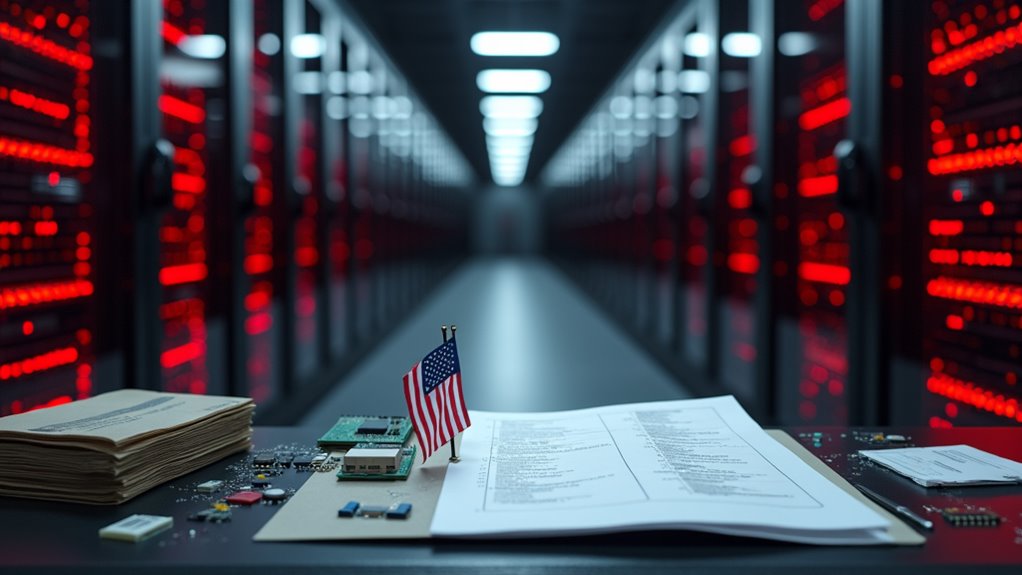Trump’s new tariffs on Asian imports have sparked outrage in the AI industry. With levies up to 32% on servers (but not chips themselves), companies face higher costs for essential infrastructure at the worst possible time. Stocks tumbled as experts warned of slowed AI adoption and supply chain nightmares—like “rebuilding an airplane mid-flight.” Meanwhile, China’s watching with glee as U.S. companies scramble to reconfigure their AI ambitions. The full economic impact is just beginning to unfold.
While everyone was busy arguing about whether AI will steal our jobs or usher in a techno-utopia, Donald Trump went ahead and dropped a tariff bomb that could fundamentally reshape the entire AI landscape. The new tariffs—reaching up to 32% on Taiwanese imports and 25% on South Korean goods—have sent shockwaves through Silicon Valley and beyond.
The timing couldn’t be more disruptive. AI companies are currently pouring hundreds of billions into new datacenters, and these tariffs are basically throwing a financial wrench into their carefully calculated budgets. Almost everything that makes these digital brains function—servers, cooling systems, power infrastructure—suddenly costs way more. The worst part is how these tariffs create direct incentives for companies to build their datacenters in regions with cheaper power availability.
Here’s the kicker: even chips, those precious AI engines everyone’s scrambling for, aren’t fully protected. Sure, they’re exempt as standalone products, but most arrive embedded in servers, making them fair game for tariff collectors. It’s like being told your engine is tax-free but the car around it isn’t.
Chips get a free pass, but the servers they live in? That’s where the tariff hammer falls.
The ramifications extend beyond mere sticker shock. U.S. AI leadership, currently the envy of the world, stands on increasingly shaky ground. Investors noticed immediately, sending stocks of AI champions like Nvidia tumbling. These economic pressures will likely make scaling AI operations more expensive and harder to justify for companies. Some companies have geographic aces up their sleeves—Nvidia’s Mexico-assembled servers dodge tariffs thanks to free trade agreements—but many competitors aren’t so lucky.
For the average tech enthusiast waiting for the next cool AI toy, expect delays and higher prices. Companies facing inflated costs will inevitably pass them along. With 77% of companies already using AI in their operations, these tariffs could significantly slow the impressive adoption rate we’ve been witnessing. The entire ecosystem faces a harsh adjustment period while supply chains get reengineered—a process that resembles trying to rebuild an airplane while it’s flying.
The global competition angle might be the most concerning. As America makes building AI infrastructure more expensive at home, countries like China stand ready to accelerate their own AI ambitions. The race for AI dominance just got more complicated, and the finish line might have just moved.









